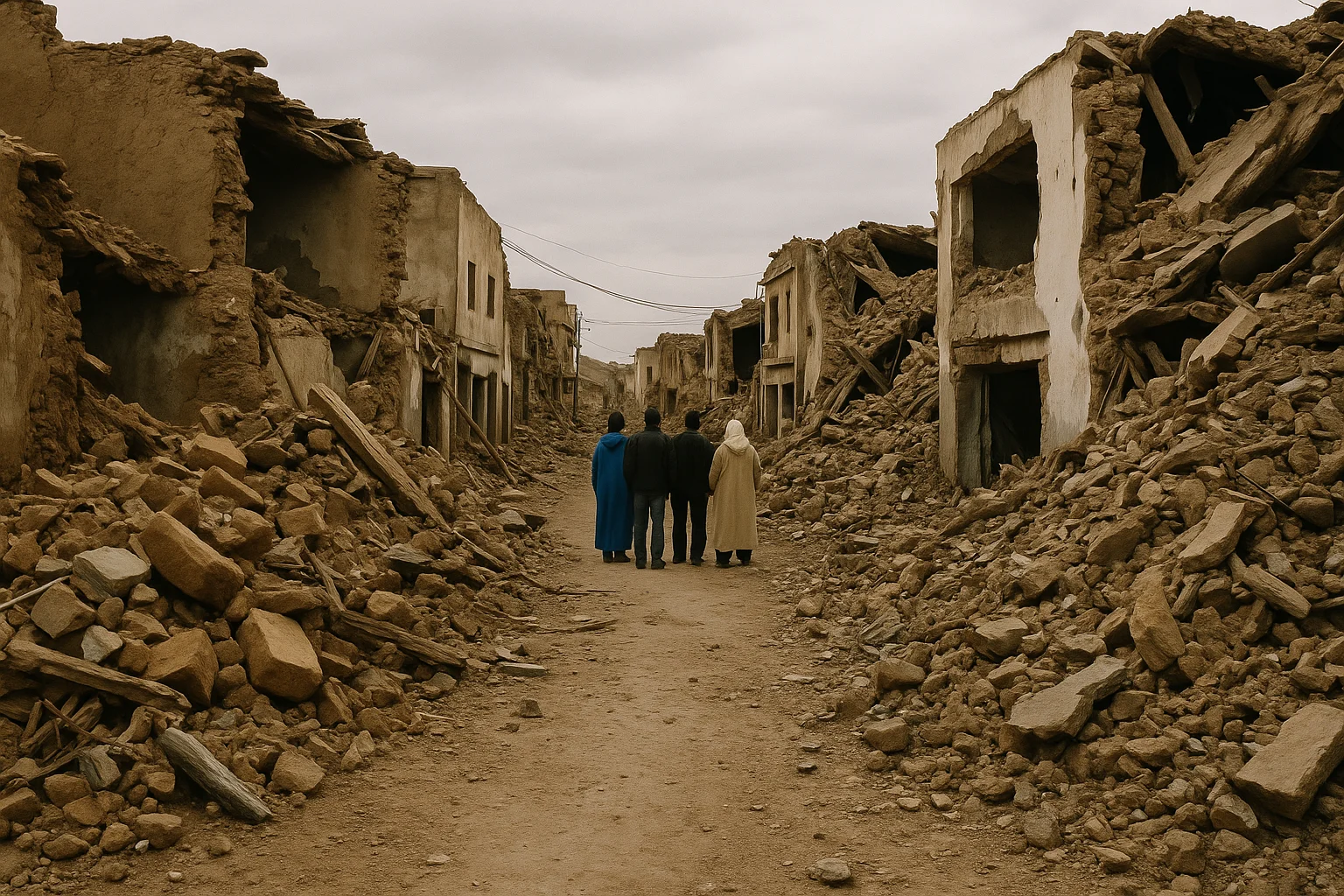
The 2004 Al Hoceima Earthquake
by: The Calamity Calendar Team
February 24, 2004
Rumblings Beneath the Surface
In the early hours of February 24, 2004, as the residents of Al Hoceima, Morocco, lay asleep, the earth beneath them shifted violently. The coastal city, known for its serene landscape of Mediterranean beaches against the rugged Rif Mountains, would soon be the center of a tragic seismic event. For a region with a history that resonates with the earth's groans and roars, recent years had been quiet. But that calm was upended by the quake that struck at 2:27 AM, registering a powerful 6.3 magnitude.
A Tectonic Dance
The seismic restlessness in this part of Morocco is a fact of life. Positioned between the African and Eurasian plates, Al Hoceima had managed to escape recent significant quakes, despite this tectonic dance. For years, the Berber community, which predominantly calls this region home, had lived in structures passed down through generations. These homes, made of mud bricks and concrete, were not so much fortresses as historical artifacts of cultural continuity.
The Unfolding Catastrophe
When the earthquake hit, it did so with ruthless precision. The epicenter, located just under the Al Hoceima province, was close enough to cause widespread devastation. Buildings crumbled as the earth shook. In the villages dotting the picturesque coastline, cries for help blended with the cacophony of collapsing structures.
As the sun rose over the stricken city, the extent of destruction became painfully clear. Rescue efforts began immediately, though they were hampered by the very terrain that makes Al Hoceima enchanting. Emergency teams from across Morocco, soon joined by international aid forces, found themselves navigating not just fallen buildings but shattered lives.
Aftermath and the Human Toll
The numbers were heart-wrenching. Reports indicated that approximately 628 lives were lost, each a story cut short by the violent tremors. Hundreds more were injured, their lives changed in an instant. Thousands found themselves without homes, staring into the uncertain future from makeshift shelters.
The economic impact was staggering, stretching far beyond the immediate need for survival. Vital agricultural activities in the region, already precarious, were now crippled by broken infrastructure and unharvested fields. The rebuilding process demanded resources—both financial and material—that tested the resilience of a country already facing economic challenges.
Thanks for subscribing!
A Nation Responds
Morocco's reaction was swift but fraught with difficulties. The government's immediate response showcased both the limitations of existing facilities and the necessity for international aid. As foreign emergency teams arrived, they brought much-needed hope alongside expertise. However, the challenging topography, with its steep and narrow roads, slowed operations and weighed heavily on those desperate for assistance.
In the weeks and months that followed, as Al Hoceima began to physically stand again, the nation looked inward, assessing not just the damage but its preparedness for future disasters. The earthquake became a catalyst, prompting a comprehensive review of building codes and emergency response procedures.
Policies were drafted, lessons learned were documented, and investments were made in seismic monitoring systems to better predict and respond to future tremors. This was more than a governmental check-up—it was a collective pledge to those who were lost and those who would live in the shadow of potential recurrence.
Lessons Etched in Stone
The legacy of the 2004 Al Hoceima earthquake lives on in Morocco's ongoing efforts to bolster its defenses against nature's unpredictability. Advances in geotechnical research have enriched understanding maps of seismic risks in the region, aiding in the development of more resilient infrastructure.
Yet, the memory of that day remains keenly felt in Al Hoceima. For its people, each reconstructed wall stands as a testament not only to survival but to their enduring connection to the land beneath their feet. An intricate tapestry of past and future threads the Berber community, as strong and as vulnerable as the earth itself.
In the immediate aftermath of the quake, a small group of residents gathered silently in front of the wreckage, their eyes resting on the crumbling reminders of what was. As they stood, the overcast sky mirrored their somber reflections, while the ground, now still beneath them, carried the unspoken promise of renewal.
Stay in the Loop!
Become a Calamity Insider and get exclusive Calamity Calendar updates delivered straight to your inbox.
Thanks! You're now subscribed.